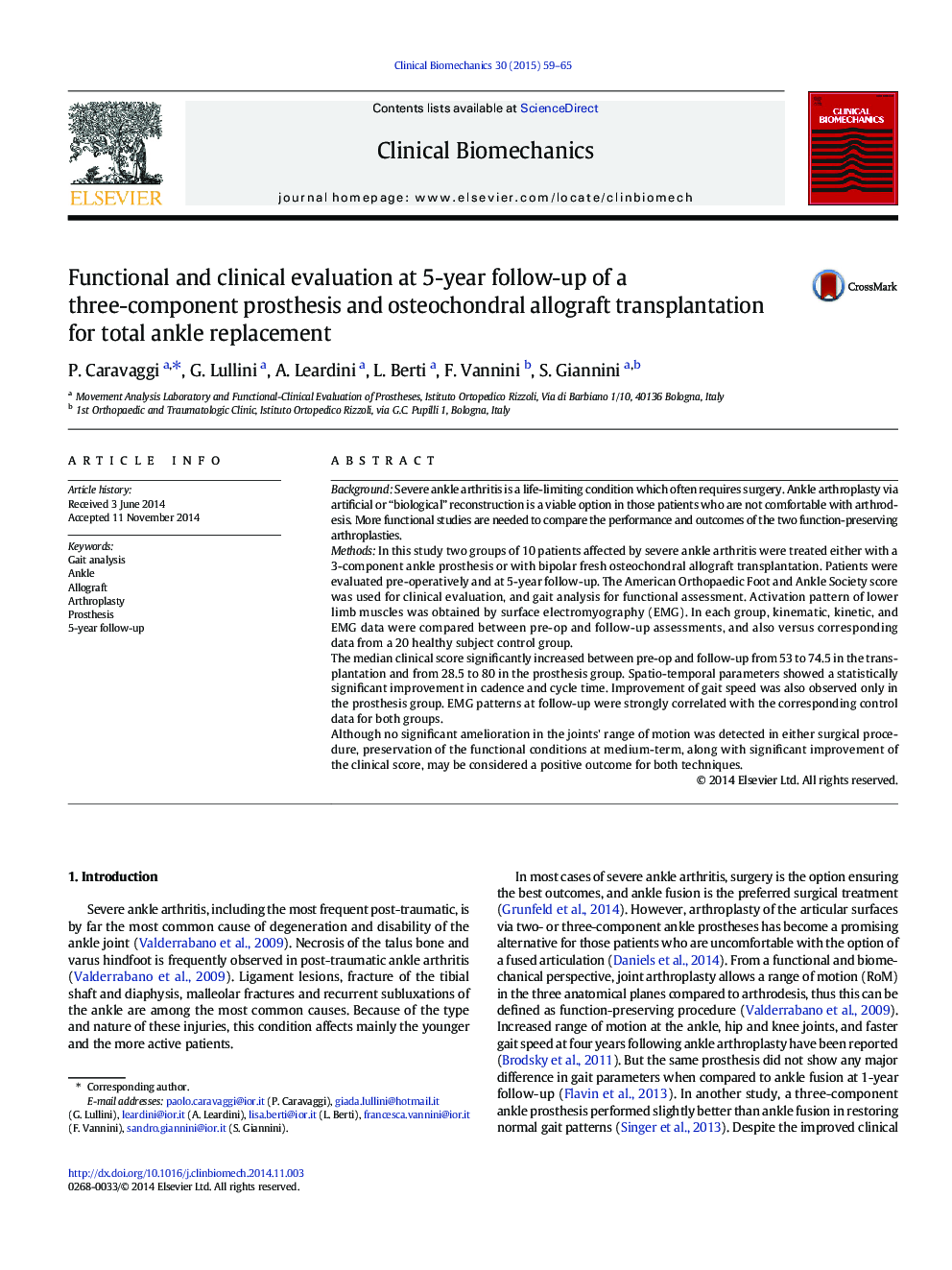| Article ID | Journal | Published Year | Pages | File Type |
|---|---|---|---|---|
| 4050262 | Clinical Biomechanics | 2015 | 7 Pages |
Abstract
In this study two groups of 10 patients affected by severe ankle arthritis were treated either with a 3-component ankle prosthesis or with bipolar fresh osteochondral allograft transplantation. Patients were evaluated pre-operatively and at 5-year follow-up. The American Orthopaedic Foot and Ankle Society score was used for clinical evaluation, and gait analysis for functional assessment. Activation pattern of lower limb muscles was obtained by surface electromyography (EMG). In each group, kinematic, kinetic, and EMG data were compared between pre-op and follow-up assessments, and also versus corresponding data from a 20 healthy subject control group. The median clinical score significantly increased between pre-op and follow-up from 53 to 74.5 in the transplantation and from 28.5 to 80 in the prosthesis group. Spatio-temporal parameters showed a statistically significant improvement in cadence and cycle time. Improvement of gait speed was also observed only in the prosthesis group. EMG patterns at follow-up were strongly correlated with the corresponding control data for both groups. Although no significant amelioration in the joints' range of motion was detected in either surgical procedure, preservation of the functional conditions at medium-term, along with significant improvement of the clinical score, may be considered a positive outcome for both techniques.
Related Topics
Health Sciences
Medicine and Dentistry
Orthopedics, Sports Medicine and Rehabilitation
Authors
P. Caravaggi, G. Lullini, A. Leardini, L. Berti, F. Vannini, S. Giannini,
